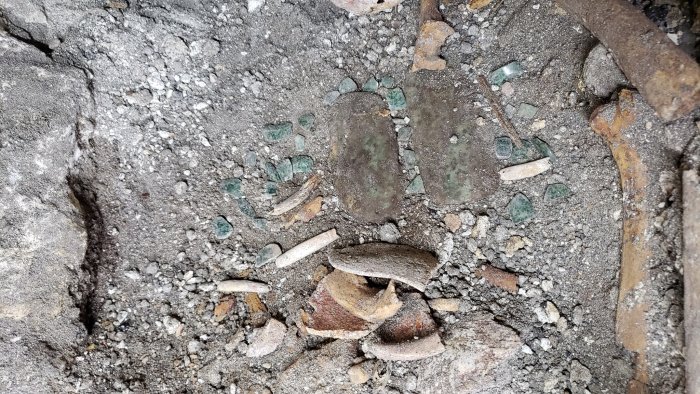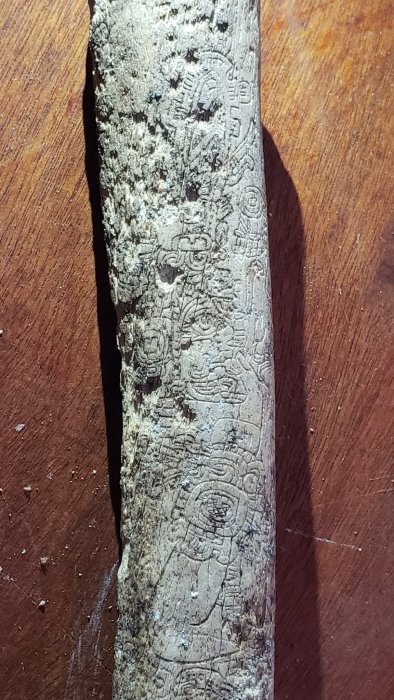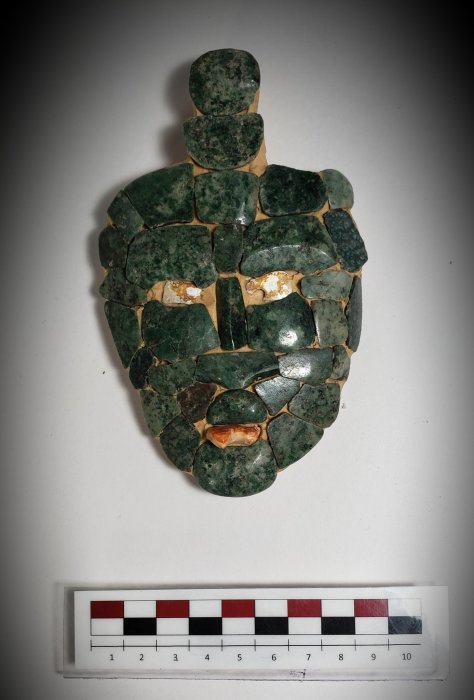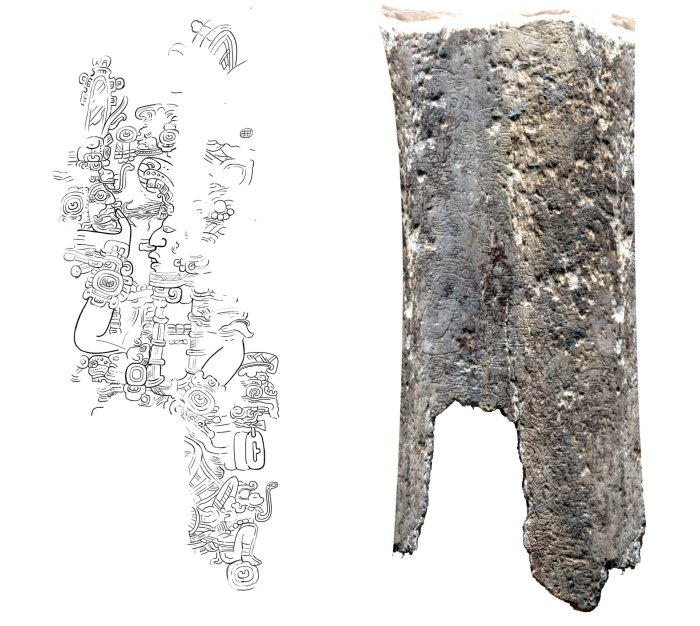Conny Waters – AncientPages.com – Archaeologists excavating archaeologist at Chochkitam in Guatemala have discovered a fascinating Maya king’s tomb filled with unique ancient treasures. Chochkitam is a little-known site near the borders of modern-day Mexico and Belize.

The excavation site of an ancient Maya tomb discovered in Chochkitam, Guatemala. Credit: Francisco Estrada-Belli/Tulane University
When scientists opened the 1,700-year-old Maya tomb, they found many striking funeral offerings, including a mosaic jade mask, rare mollusk shells, and writings carved in human femur bones. Jade was sacred to many ancient civilizations who believed the precious green stone could conquer time and guarantee immortality, which is one reason why so many burials contain jade artifacts of some sort.
Francisco Estrada-Belli, the lead archaeologist at Tulane University School of Liberal Arts who discovered the tomb, compared the discovery to winning the lottery in terms of the information it provides. “It opens a window into an obscure time we have very little texts about,” he added.

An incised femur bone discovered inside an ancient Maya tomb dating back 1,700 years in Chochkitam, Guatemala. Credit: Francisco Estrada-Belli/Tulane University
Archaeologists across the globe are grappling with the issue of looting at archaeological sites, which has become increasingly rampant in recent years.
The Maya sites, in particular, have suffered significant losses due to theft and looting.
The impact of looting on the archaeological record is significant, as it deprives researchers of valuable information about the past and, in some cases, can lead to the destruction of archaeological sites.
The height of the Maya classic period spans 250-900 A.D., but few archaeological remains are left from this period. Estrada-Belli and his team were lucky. They found the more or less undamaged Maya king tomb only about 2 meters (6 feet) from where looters had stopped digging.
Inside the tomb, the archaeologists found over 16 shells of spondylus, a rare spiny oyster that was used as jewelry and currency and in religious and sacrificial offerings by royalty in ancient times.
The relics, estimated to be from 350 CE, connect Tikal and Teotihuacan, revealing political and cultural ties between the two. They also provide valuable insights into Maya religious practices, royal succession, and politics. These antiquities offer an invaluable resource for scholars and researchers interested in the ancient Maya civilization.
“All of Indigenous America has a deep and complex history,” said Marcello A. Canuto, MARI director and Tulane archaeologist specializing in Maya archaeology.

A mosaic jade mask discovered inside the ancient Maya tomb. Credit: Francisco Estrada-Belli/Tulane University
“For this reason, Tulane recognized early on that it was important and worthy of serious and focused academic interest. Discoveries like this one and others, including those made by other Tulane faculty and students also conducting fieldwork, represent Tulane’s commitment to the study of ancient indigenous American peoples and their accomplishments.”
Estrada-Belli has announced the next stage in his work at the site will be to conduct DNA testing on the bones and maybe uncover additional key contents buried within the abandoned pyramid.

Incised femur bone beside drawing by Alexandre Tokovinine with the Tulane University Holmul
Archaeological Project. Courtesy Tulane University
“Our investigations at Chochkitam sought to uncover archaeological and historical data to fill a
large gap in the history of a section of northern Peten that extended from Holmul to Rio Azul, for
which little or no well-preserved texts exist. Of particular interest to us were any possible links to the ebb and flow of regional political influences during the middle of the Classic period; in particular, whether the Kaanu’l expansion prior to the decisive war against Tikal in AD 562 advanced through a direct route,” the research team wrote in their study.
See also: More Archaeology News
It’s worth noting that the Chochkitam ruins have been a subject of fascination and may have many more secrets to reveal. Though Chochkitam was first investigated back in 1924, no formal excavation had been carried out until Estrada-Belli and his team took the initiative to explore these ruins more thoroughly in 2019, leading to a wealth of discoveries about the area’s ancient past.
What can be uncovered through careful research and excavation is truly remarkable, and these findings will undoubtedly help shed more light on the intriguing ancient Maya civilization.
Written by Conny Waters – AncientPages.com Staff Writer
Expand for references
- Estrada-Belli F, Tokovinine A. Chochkitam: A New Classic Maya Dynasty and the Rise of the Kaanu’l (Snake) Kingdom. Latin American Antiquity. 2022;33(4):713-732. doi:10.1017/laq.2022.43
- Stacey Plaisance – Tulane archaeologist uncovers ancient Maya king’s tomb, revealing rare treasures and royal lineage – Tulane University





